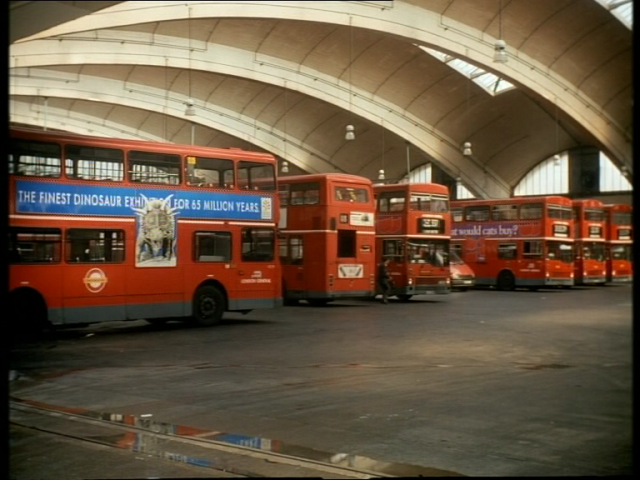
In the dying years of the last century, Patrick Keiller was Britain's leading cinematic psychogeographer, mapping the unconscious impulses of the English cityscape in two remarkable feature films, London (1994) and Robinson in Space (1997). Both films were supported by the British Film Institute, before it stopped supporting the production of actual films. As state support for the arts dwindled in Britain, becoming more and more driven by the desire to pursue commercial success at the expense of artistic creativity (as if the two should always be considered polar opposites), Keiller seemed to fall silent, like that other great BFI beneficiary, Terence Davies.
But now, rather astonishingly, he's back! Robinson in Ruins (2010) will continue the peregrinations of the fictitious lecturer and flaneur, although with the passing of Sir Paul Scofield, the film's narrator has undergone a change of identity and will now be embodied, or rather disembodied, by Vanessa Redgrave.
Such a reappearance seems in the nick of time for Keiller, for although the BFI helpfully kept his two feature available on DVD (his one film in the intervening years, a BBC documentary called The Dilapidated Dwelling, is much harder to see), his reputation was in danger of dropping below footnote status, even as Christopher Petit and Iain Sinclair, his nearest equivalents, have remained reasonably prolific as filmmakers and authors, though the wares they hawk strike me as inferior to Keiller's.
So, I'm looking forward to Keiller's new masterwork, which has received positive reviews and is currently enjoying a somewhat limited distribution in the UK, and I was also encouraged to look back at the previous two entries in the series.

I discovered the films screening on late-night Channel 4, and I wonder slightly at my own powers of endurance back then: the movies, though strangely gripping, also exert a marked somnolent effect, via Scofield's bone-dry V.O., and the succession of stationary shots of buildings and landscapes that make up the picture track. But somehow sleep does not come, and instead a hypnogogic reverie or dwam envelops the rapt viewer, who may feel a pleasant sinking sensation as if the couch, or universe, were softening to envelop their descending body.
Each film narrates the various "projects" of Robinson, who is never seen or heard from directly. Said projects include reinventing Leicester Square as a tribute to Laurence Sterne, the bridges over the Thames as a homage to Arthur Rimbaud, or traveling in time, and though Robinson always seems on the verge of suicide, or destitution, or mental collapse, it has to be said his projects often achieve some kind of evanescent success. In particular, the examination of the city through the lens of literary history, exploring the haunts of Edgar Allan Poe, Horace Walpole, H.G. Wells or Daniel Defoe, seems to offer a route to appreciating our own home cities or landscapes, through an awareness that when we walk, or take the bus, or otherwise move through space, we are also moving through time, not only forwards, but backwards and sideways.

It's bizarre, perhaps, to see the roots of romanticism in the staid, static (if often deeply beautiful) images Keiller photographed himself—gate-posts at a park, an office building with its windows shattered by an IRA bomb, a shopping centre and a MacDonalds with an inflatable clown on the roof, seeming to shift his weight from haunch to haunch with each gust of wind. But Scofield's oneiric tones (a voice easily the equal of John Gielgud or Ralph Richardsons's) transport us through the screen to mirror-land, where everything is reversed. The use of incidental music from The Lone Ranger may not convince us wholly of the lurking drama concealed beneath the placid surface of every city street, although when word and image collide, a pub sign can easily stand in for the scaffold where King Charles was executed. But in Robinson in Space, the haunting piano chords from Powell and Pressburger's A Matter of Life and Death, which seem, like an Escher staircase, to be forever climbing but never arriving, suggest both the span of eternity and the escalators of Brent Cross shopping centre.

All images are from London.
***
The Forgotten is a regular Thursday column by David Cairns, author of Shadowplay.